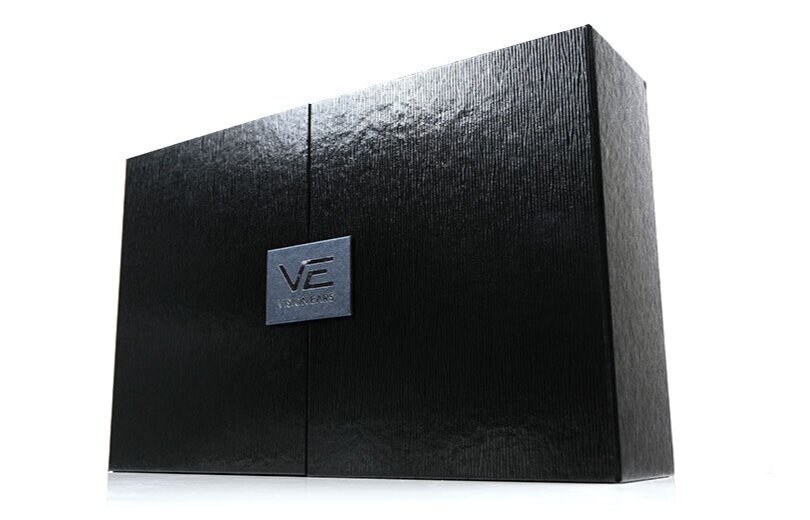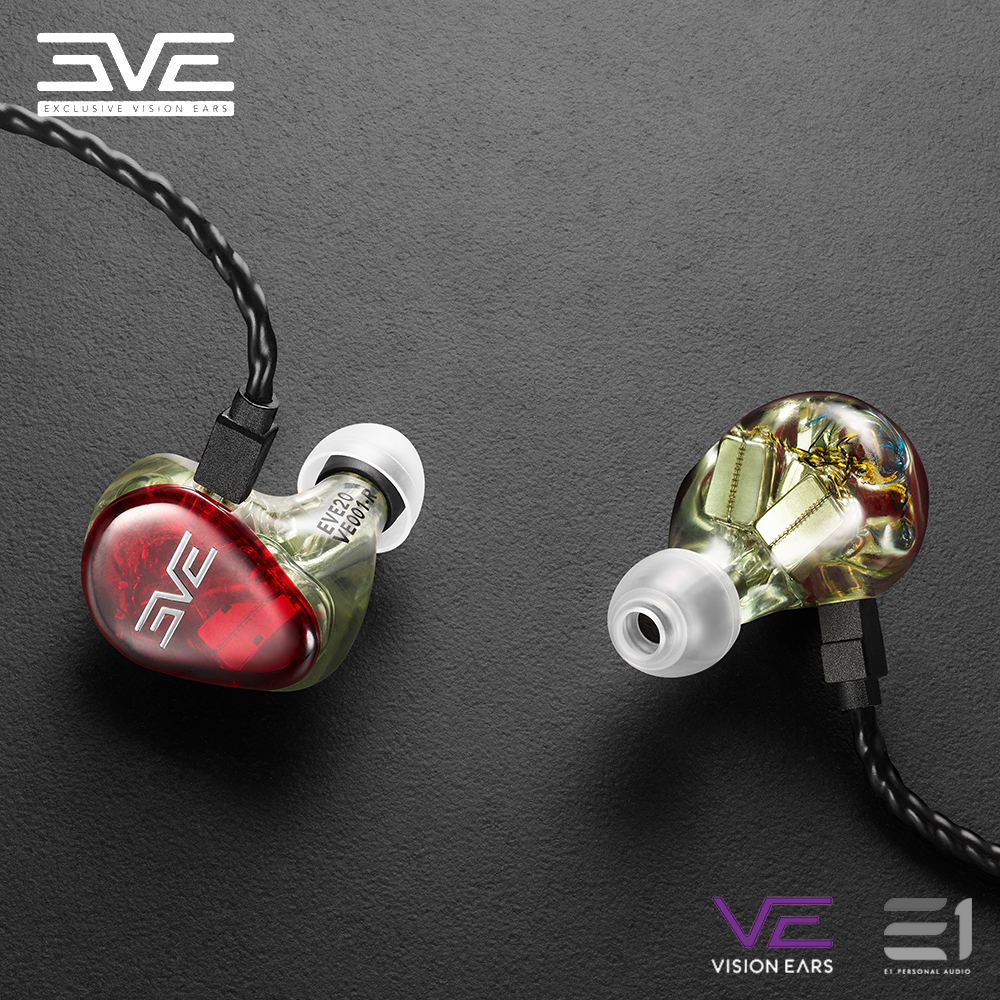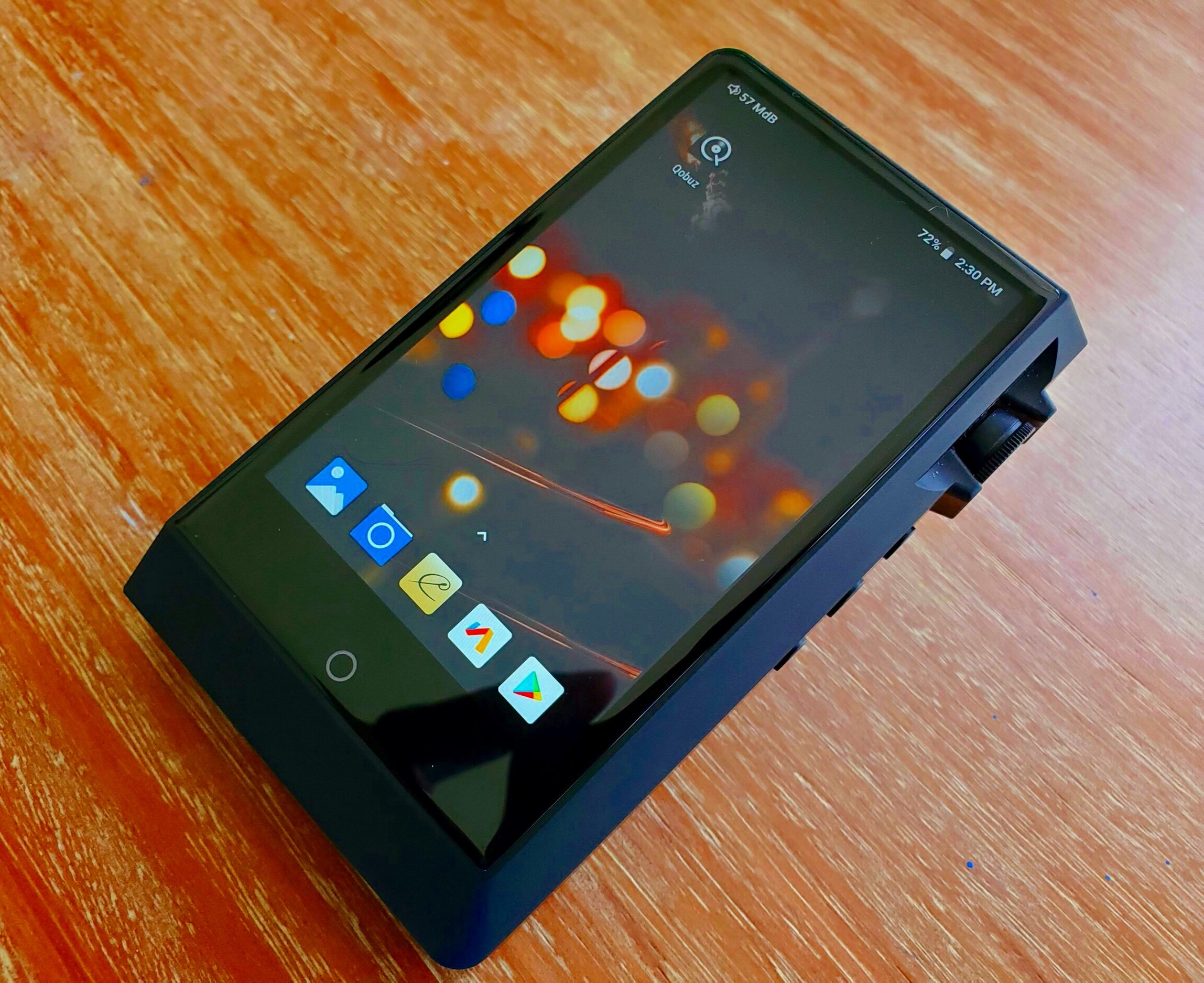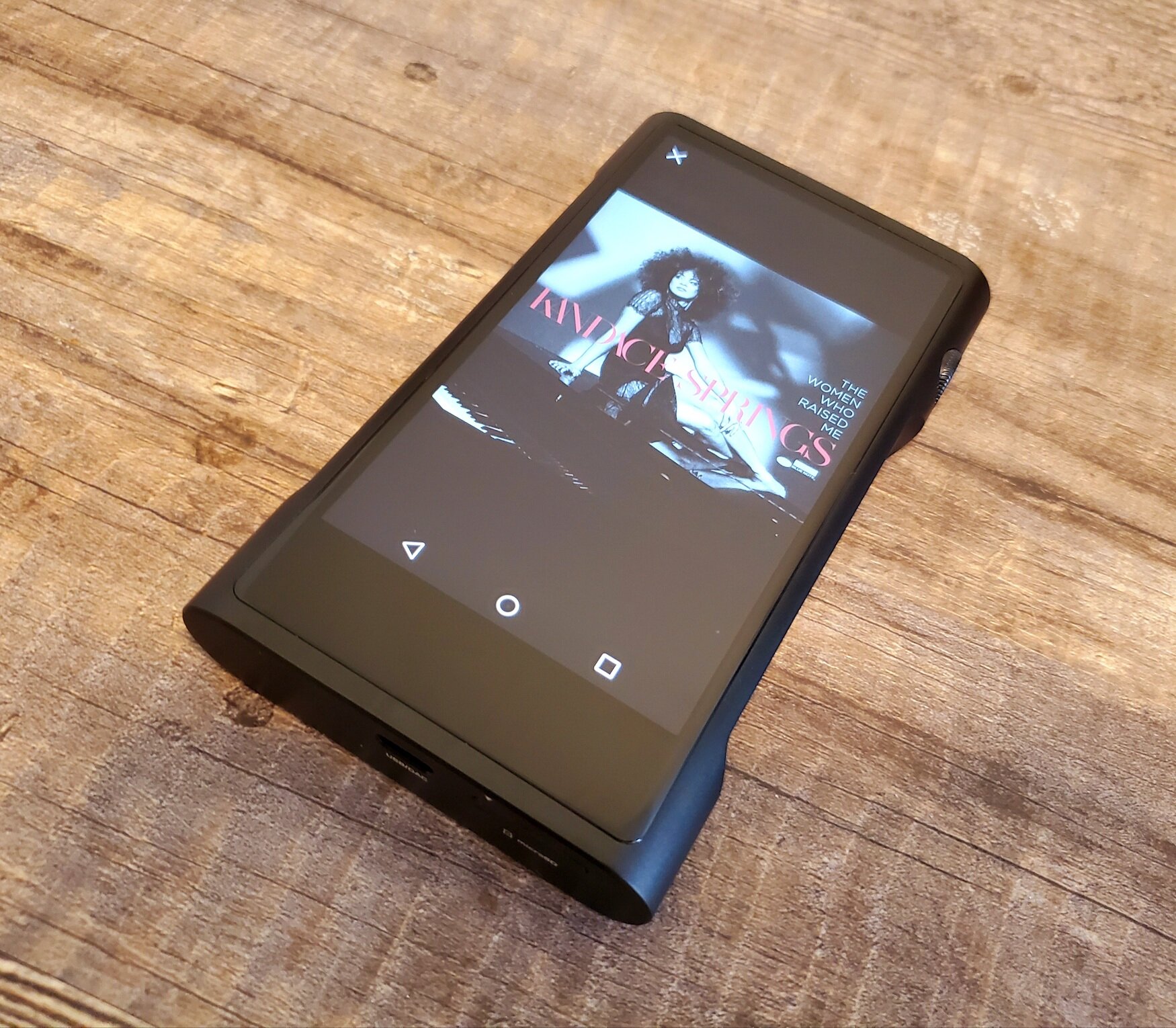VISION EARS ELYSIUM REVIEW (UNIVERSAL)
A Musical, Wondrously Transparent, Transient Quick IEM!
The VISION EARS ELYSIUM ($2500) is the sibling to the EVE2020 that I reviewed a few short weeks ago, wherein the EVE2020 revealed itself as a stellar performer that was beautifully balanced, transparent in the extreme with excellent low frequency response, a beautifully musical and engaging midrange, and a very nicely extended and smooth treble. Though while reviewing the two IEMs I would get a preview of the ELYSIUM in direct comparison and, suffice to say, I was very intrigued. Which has, of course, led to this review.
As I wrote in the review about the EVE, VISION EARS was founded by Marcel Schoenen, a former guitarist and singer for the band SUIDAKRA (folk-metal), and Amin Karimpour, a design and IEM enthusiast with an “exceptional love for detail.” The two met while working for a leading German IEM company. And it would be a shared vision—for quality, product design, and customer service—that would see Marcel and Amin starting their own IEM company, a number of years later.
In 2013 “with a small bag of money and a way bigger bag of cojones,” the duo launched VISION EARS, nestled in Cologne’s central south region, near Germany’s western border. Shortly thereafter their vision and enthusiasm would draw to them a team that was as passionate about IEMs as were they. And in 2014 VISION EARS introduced its first two products—the VE6 and the VE6 Xcontrol—to wide acclaim. Over the ensuing years the company would produce a number of IEMs—VE2, VE3, VE4, VE5, VE8—and various custom inner-ear-monitors (CIEMs), that would likewise gather acclaim and near cult status across Europe. Fast forward to October, 2020 and by all accounts and measures VISION EARS has happily left behind startup-status and has enjoyed a, decidedly, good run of both its universal and its custom IEMs. Its latest Universal IEMs are the EVE2020, the ERLKÖNIG (sold out), and the ELYSIUM that is now currently under review.
As I said in the review of the EVE2020—“Rarely, in my experience, does a manufacturer’s product claim or marketing pitch match up with the actual traits, abilities, specifications, or sound of the product in question.” And as it was true with the EVE2020, the above statement seems to define the VISION EARS overall design and engineering modus operandi.
REFRAIN: Unlike most reviews, this review will be non-sequential, as it will start with how the headphones actually sound and not the process of physically “undressing” them and/or laying out their various parts, specifications, etc. Think of this review then, as a non-linear movie—Memento, Kill Bill, Arrival, Eternal Sunshine of the Spotless Mind, The Terminator, Dark City, In the Shadow of the Moon, etc—that, likewise, starts at the end and winds its way to the beginning.
The Sound
The Vision Ears ELYSIUM like the EVE2020 came fully burned-in and this is always a treat, though I do understand that it can not always be so.
Transparency is one of the ELYSIUM’s most dominant traits, as it will lay bare, as much detail as the associated DAP, headphone amp, integrated, or DAC will provide. However, stellar dynamics/lightening fast transients appear to be another trait, which lets the flow of orchestral music, big bands, and very dynamic tracks flow naturally, smoothly, and unencumbered.
One thing that can certainly not be overlooked is the decision of VISION EARS to place the dynamic driver at the ELYSIUM’s midrange, which has compelled an incredibly rich, natural, and detailed midrange, that its EVE2020 sibling, simply, cannot match. As I wrote in the comparison section of the EVE2020’s review.
“Firstly, if I believed the EVE to have its hoard of gold stashed away in its midrange, then there are diamonds, platinum, hordes of bitcoin, and “gold-pressed latinum” stashed away in the midrange of the ELYSIUM.”
And an extended review of the ELYSIUM paints a solid truth to that statement. The timbre of the ELYSIUM, given its, relatively, close proximity to the neutral zone, becomes dependent on the DAP or source component in question. Do take note, that the DAP in question must be up to the challenge and itself of a musical sort. I found that the DAPs on hand—Shanling M8, iBasso DX220 (AMP1 MkII, AMP9), and the Cayin N6II (A01, E01)—were all very much up to the task and the resulting synergies were quite good to outstanding!
The Vision Ears ELYSIUM’s volumetric cube—its soundstage—is of a good size. Its width, depth, and height are quite good but not the Ne Plus Ultra—the highest point capable of being attained. The ELYSIUM’s positioning, layering, and separation are also very good and conjure the intimate, the concert stage, or the concert arena, when called to do so.
I put the ELYSIUM through the same musical pieces that I had reviewed the EVE2020 with, for more of a direct comparison between siblings and a direct face-off with other competitors (see below).
The Vision Ears ELYSIUM was reviewed in single-ended mode, with its stock cable, and the large-sized, Spinfit eartips. It was partnered to the Shanling M8 and the iBasso DX220/AMP1 Mk II.
Bass
Eiji Oue’s The Firebird Suite (1919 version): VII Finale (Stravinsky, Reference Recordings), plays and the ELYSIUM’s low end response is quite good, but it does not rumble, nor does it seem to tap into the stygian bass-head depths, that the EVE2020 was able to do. The EVE2020’s two BA drivers apparently were the magic sauce for this frequency region. However, the detail, the transparency, the transient speed, and overall coherency, across this region, all rise above its siblings abilities. The bass is, nonetheless, quite good and will serve many well. It may not serve those who consider themselves bass-head “firsters” above all else and who seek out the Holy-Bass-Head-Grail. In a slight divergence from the EVE2020’s playlist, given the bass differential between the two VISION EARS siblings, I’ve selected Dave Holland’s Emerald Tears (Emerald Tears, ECM) track. Here the ELYSIUM’s better-than-sibling-traits are on full display. Tight, fast, transparent, and thus beautifully detailed, with Dave Holland’s dexterous finger work clear as crystal, is how the ELYSIUM renders this track. Suffice to say, that Jazz, Blues, Folk, Country, and a host of other musical genres will be well served, just not those requiring subterranean, bass depth.
Midrange
Melody Gardot’s C’est Magnifique (Sunset in The Blue, Decca) now plays and the ELYSIUM’s transparency renders a crystal clarity across this track far above its EVE2020 sibling, which deftly ferrets out macrodynamic detail and air and timbral distinctions a plenty. Yet despite the transparency there is a sumptuousness, a richness, that fleshes out a very convincing palpability. Melody’s voice on this track is clear and rich and palpable, and “there,”as is the voice of Antonio Zambujo her accompanying singer for this Bossa Nova track. Joan Shelly’s Wild Indifference (Joan Shelley, No Quarter) now plays and her voice is rich, textured, clear and the accompanying guitars are all solidly positioned. The ELYSIUM’s rendition of this track and then the next—Isn’t That Enough—is in a phrase, beautifully captured, engaging, and rich. And yes, on Wild Indifference, at the one minute and forty-five second point the tambourine appears beautifully corporeal and well into the room.
Treble+
The Kronos Quartet’s Aaj Ki Raat—Tonight is the Night—(Kronos Caravan, Nonsuch) now plays, its exotic mix of instruments—Hindustani tabla to the Lebanese nay to the Iranian kemancheh, tar, and tombak—are all well positioned and spread nicely across the soundstage. The transparency is, of course, outstanding! There is, however, a noticeable lack of body in this electrostatic driven region, which is often a common feature even among fully realized electrostatic headphones. And despite the ELYSIUM’s two electrostatic drivers, there is still a lack of body and texture and, at times, things can get a little crispy. The electrostatic drivers are definitely rapid-fire quick, very extended, but what they lack in overall weight/body may well be distractive for some.
The Wrappings and Accessories
The Vision Ears ELYSIUM comes in a large, black, textured, rectangular box, with the VISION EAR’s logo as both badge and opening tab on the top of the box. ELYSIUM is printed in big, bold letters on the front face of the box.
Once the lid flaps, right and left, have been pulled back, the inner tray is elevated, via a rather clever attachment to the lids, above the box. On the top level of the inner tray sit the ELYSIUM with attached cable as embedded in a foam cutout. To the left, in a flat, rectangular cutout are the various accessories:
1-instruction manual
1-warranty card
3-pairs of SpinFit tips (S/M/L)
3-pairs of EPros tips (S/M/L)
1-microfiber cloth
6-earwax meshes w/a guide on their use
Once the top tray is lifted out, within the exposed bottom tray are:
1-bottle of cleaning spray
1-cleaning tool
1-microfiber cleaning cloth
The ELYSIUM’s package design is clean, elegant, understated, and rather clever in regard to the box’s lifting mechanism which exposes the inner box, granting easy access to both the first and second layers.
Design—Look and Feel and Fit
The VISION EARS ELYSIUM is a beautifully designed IEM that sports blue-green tiger stripes across its translucent, front face, with ELYSIUM printed on both universal monitors. Its reverse or in-ear side is completely translucent which shows the various drivers as engineered within.
Like the VISION EARS EVE the ELYSIUM’s nozzle is rather large in circumference and it extends out quite a bit. And while the fit is still very comfortable there are eartips that will not easily affix, if they should affix at all, to the nozzle. Also like its sibling the ELYSIUM is extremely eartips sensitive and can go from sounding quite incredible to, well, a contradiction. It will, however, only take a little bit of experimentation to find the proper eartip, that will reveal the ELYSIUM’s various strengths.
The ELYSIUM employs a three-way configuration that utilizes four (4) drivers—1 Balanced Armature (BA) driver for the lows, 1 dynamic driver for the midrange, and 2 electrostatic drivers for the treble
The Specifications
Driver Tech/Type (4 Driver, 3-Way):
1-BA (bass)
1-Dynamic (mids)
2-Electrostatics (highs)
Freq. Res.: 10Hz-40 kHz
Sensitivity: 105dB (@1kHz)
Impedance: 16.4 Ohms
Plug Size: 2.5mm gold-plated
Cord: Black, 4-wire, silver-plated copper
Cord length: 1.2m
Drivability
The Vision Ears ELYSIUM has a low impedance (16.4Ω -Ohms) and a relatively high sensitivity (105dB).They are, as a result, fairly easy to drive and they work with numerous devices ranging from smartphones to computers, but work well with the entire AudioQuest DragonFly family to DAPs to desktop systems. The ELYSIUM scales quite nicely with higher powered, more apt equipment. Though due to the high sensitivity of the ELYSIUM, source matching should definitely be considered, as tubed DAPs/Amp/DACs paired to the ELYSIUM may result in some hiss.
Comparisons
It came down to four songs that would be utilized to help differentiate the various IEMs. The comparisons were done using the following four tracks/songs:
Joan Shelly’s Wild Indifference (Joan Shelly, No Quarter)
Olafur Arnalds’ Árbakkinn (Island Songs, Mercury (Universal France))
Massive Attack’s Angel (MEZZANINE, Virgin) and
Eiji Oue’s The Firebird Suite (1919 version): VII Finale (Stravinsky, Reference Recordings)
The various IEMs were partnered to the SHANLING M8.
FIIO FD5 ($299)
Despite its price point the FiiO FD5 should absolutely not be overlooked as the Top-of-the-Line (TOTL) IEM that FiiO slates it to be. The FD5’s bass was on another level altogether from the ELYSIUM, as there was rumble, thunderous bass, a smooth, very engaging midrange, though like the ELYSIUM, the FD5’s treble could also get a bit crispy at times. What the FD5 did not bring was the level of transparency that the ELYSIUM brought nor the transient speed. And though the FD5 provided an exceptionally engaging midrange, the ELYSIUM’s midrange was better still.
VISION EARS EVE2020 ($1300)
The VISION EARS EVE2020’s bass response was on the level of the FD5 if not slightly above, as it too was taunt, thunderous, and would rumble with the best. And while its midrange was rich, analog-like, and detailed, the ELYSIUM’s midrange-infused, dynamic driver certainly won the battle there. Though the EVE2020’s BA treble was not as extended, nor as transparent, nor as lightening fast, there was never a point where it became crispy or sibilant or harsh. The EVE2020’s treble was as smooth as silk.
oBRAVO EAMT-2C ($3,000)
The Obravo EAMT-2C, for all intents and purposes, is an IEM destroyer. And the ELYSIUM is not the first, nor will it be the last, to not match up to the EAMT-2C across all important/relevant categories—bass, midrange, treble response, transparency, musicality, analog-like richness, transient speed, etc. And the Obravo EAMT-2C plays well with all comers from smartphones to DAC dongles to DACs, headphone amps, etc. And it has never been sibilant or crispy or harsh or grainy ever. The EAMT-2C represent an endpoint for IEM users/collectors.
Synergy
iBASSO DX220 AMP1 Mk II
The ELYSIUM and the iBasso DX220 brought more weight to the bass region, very good transparency, drive, and a wee bit more tautness, though the single BA driver could still not reach the Holy-Bass-Head-Grail. The midrange was detailed and fast though not as rich or as textured or as palpable as either the Cayin N6II or the Shanling M8. This was, nonetheless, quite the propulsive combination. Overall this combination brought a transparency above the Cayin N6II but not to the level of the Shanling M8.
CAYIN N6II/A01
The ELYSIUM and the Cayin N6II/A01 sang well together and the bass remained quite good, but did not rumble, nor reach to stygian, bass-head depths. But the midrange was sublime and rich and very engaging. And interestingly a bit of the electrostatic treble was calmed and equipped with a wee bit more body, which lifted the ELYSIUM’s overall performance.
SHANLING M8 ($1,659)
The ELYSIUM and the Shanling M8 formed a very good alliance and bettered the ELYSIUM’s low frequency extension, filled out to an even greater degree its midrange texture, richness, and palpability, but like the others, it could not entirely tame the electrostatic trebles proneness to be somewhat excited at times. This combination I found to be the most copacetic with the VISION EARS ELYSIUM.
Conclusion
The VISION EARS ELYSIUM ($2500) is a very good IEM whose midrange summons transparency and richness and transient speed, that is truly compelling. And its bass, while not the deepest, will please many if not most for its delivered quality, transparency, and its transient quickness. And there are those for whom the ELYSIUM’s electrostatic imbued treble will be manna from heaven, the cat’s pajamas, and quite lovely. And those for whom it will not.
Further, the VISION EARS ELYSIUM is exceptionally well constructed, beautifully designed, housed in an elegantly designed package, easily and comfortably worn for long hours, and very nicely equipped.
We recommend the VISION EARS ELYSIUM as a musical, wondrously transparent, transient quick IEM, that is competitive with a range of TOTL IEMs currently on the market.
THE system(s)
N/A
THE COMPANY
VISION EARS
VISION EARS ELYSIUM ($2500)
VISION EARS
Luxemburgerstr. 51
50674 Cologne
GERMANY
+49 (0)221 - 80064334
info@vision-ears.de











